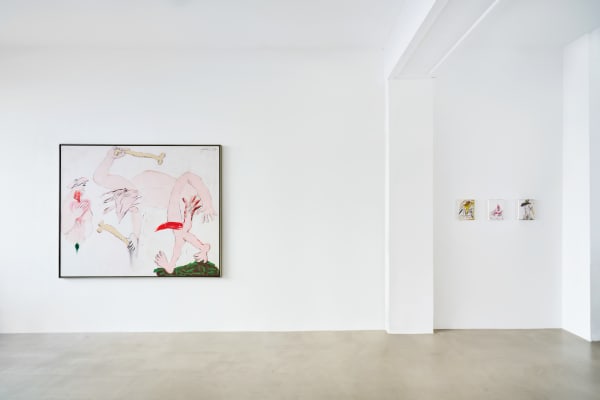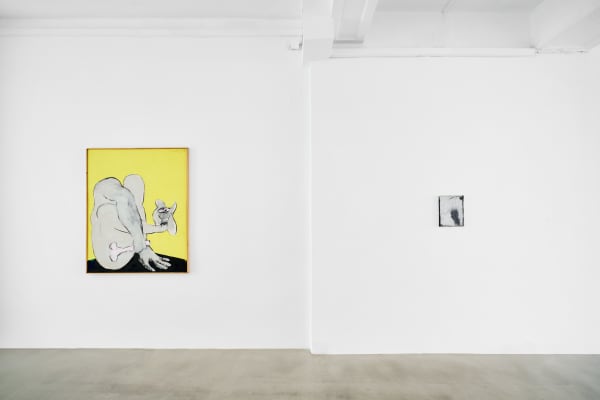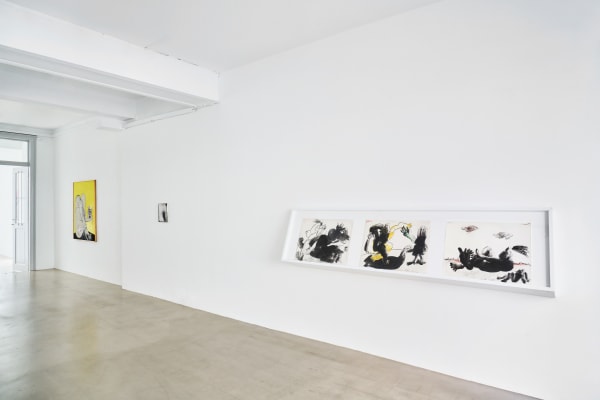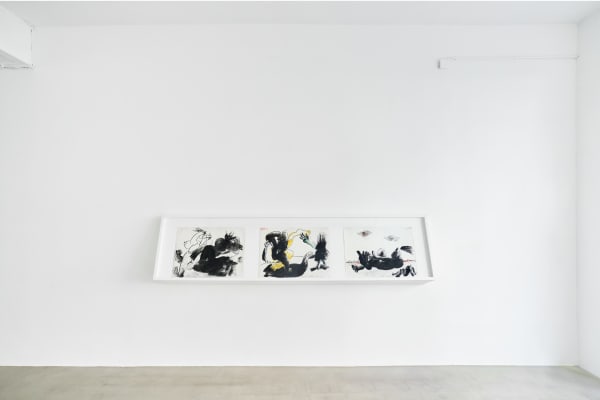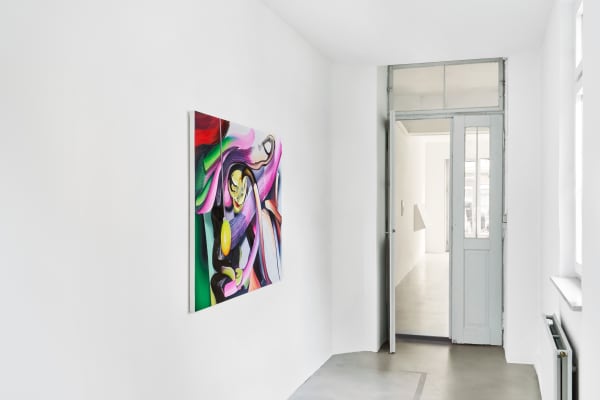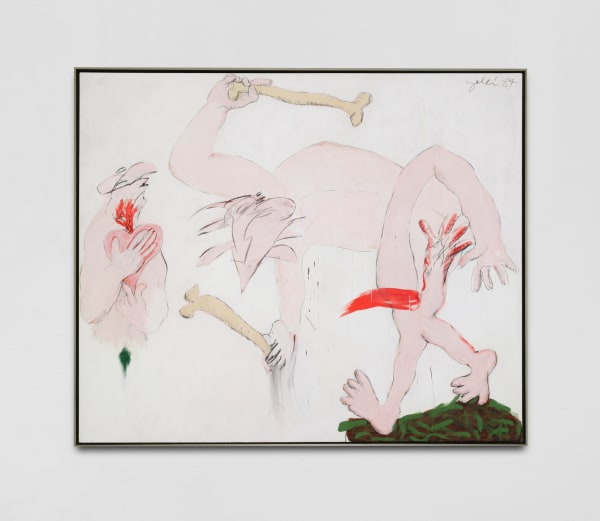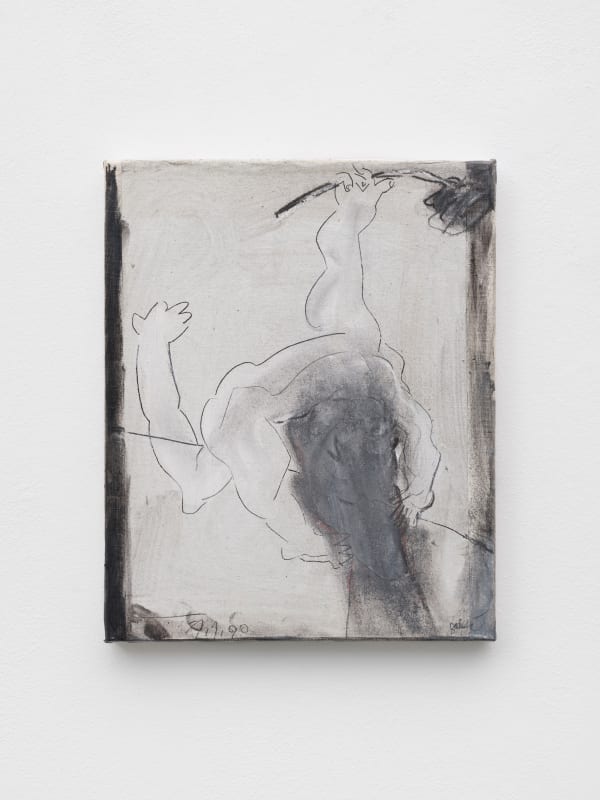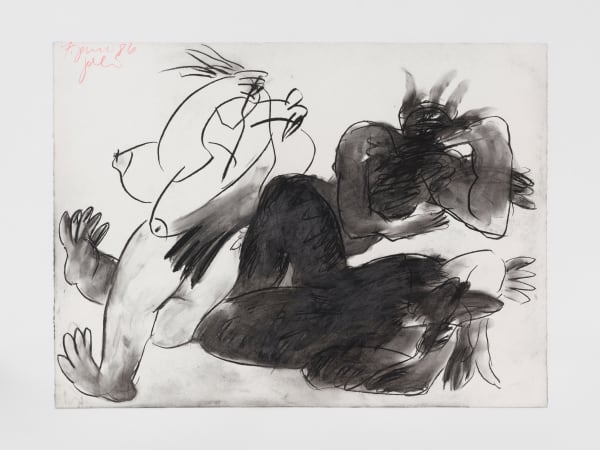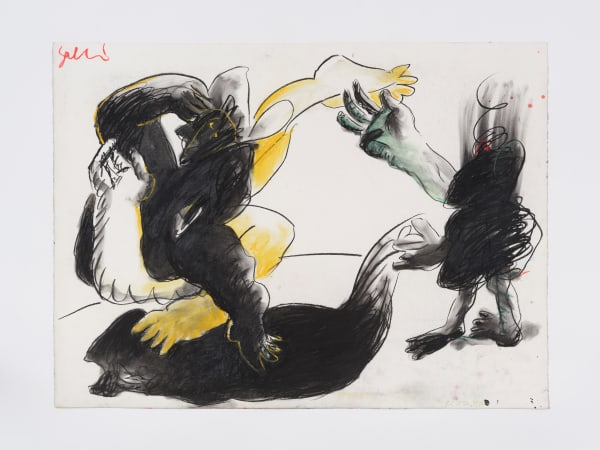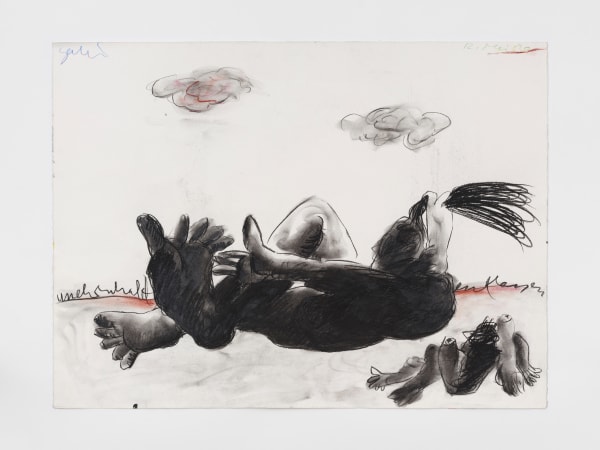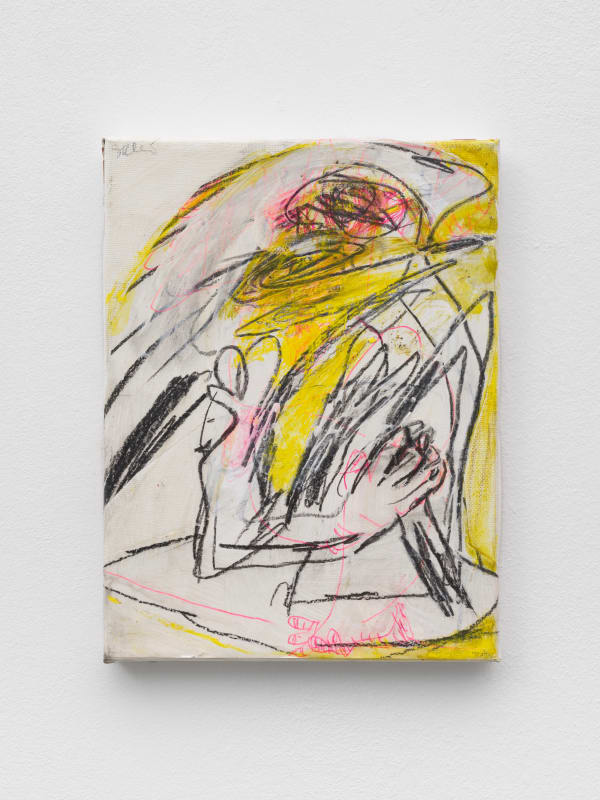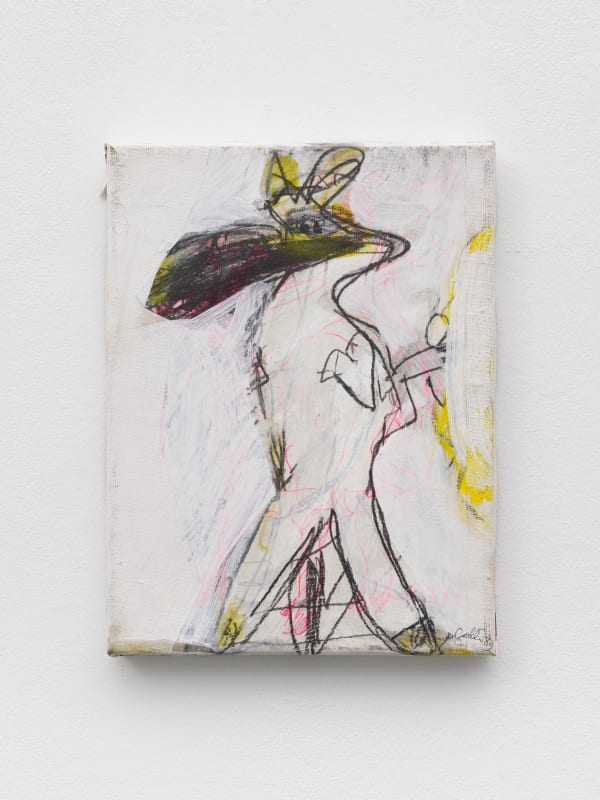MUNICH III: Galli
Kraupa-Tuskany Zeidler is pleased to announce GALLI’s second solo exhibition with the gallery, and her first in our Munich location, with works by Pieter Schoolwerth in the showroom.
GALLI
Munich III
Kraupa-Tuskany Zeidler, Munich (DE)
20.09.2025–07.11.2025 (solo)
Opening Reception: 19.09.2025, 5-8 pm for VARIOUS OTHERS
Munich III marks not only a presentation of rarely seen works from the 80s, but also an invitation to deepen the engagement with Galli’s multifaceted artistic cosmos. Her drawings transform impressions of everyday life and mythology into twisted scenes that capture the tension between the mundane and the enigmatic. Galli’s works narrate struggles with daily banalities, moments of mystical intensity, and themes of sexuality, longing, frustration, and resilience. They convey the humor found in entanglements, the wit of distorted wordplay, and the delight in the chaos of failure.
-
 Munich III, exhibition view, Kraupa-Tuskany Zeidler, Munich, 2025
Munich III, exhibition view, Kraupa-Tuskany Zeidler, Munich, 2025 -
 Munich III, exhibition view, Kraupa-Tuskany Zeidler, Munich, 2025
Munich III, exhibition view, Kraupa-Tuskany Zeidler, Munich, 2025 -
 Munich III, exhibition view, Kraupa-Tuskany Zeidler, Munich, 2025
Munich III, exhibition view, Kraupa-Tuskany Zeidler, Munich, 2025 -
 Munich III, exhibition view, Kraupa-Tuskany Zeidler, Munich, 2025
Munich III, exhibition view, Kraupa-Tuskany Zeidler, Munich, 2025 -
 Munich III showroom, exhibition view, Kraupa-Tuskany Zeidler, Munich, 2025
Munich III showroom, exhibition view, Kraupa-Tuskany Zeidler, Munich, 2025
This second solo exhibition of Galli with the gallery revisits rarely seen works from the 1980s while inviting a deeper engagement with her multifaceted artistic cosmos. Intimate mixed-media canvases, DIN A3 drawings, and a selection of medium- and large-scale paintings together situate her practice in its full ambivalence.
Since the late 1970s, Galli has pursued a body of work centered on corporeality. Human figures, or their disjointed limbs, inhabit her drawings and paintings, often contorted, entangled, or strangely aligned with machines and objects. These bodies suffer, desire, and resist, suspended between the mundane and the mythical. Her imagery moves fluidly across registers: erotic and grotesque, humorous and brutal, lyrical and abject. It is precisely this embrace of contradiction that generates the peculiar intensity of her compositions.
The three drawings displayed in a vitrine are autonomous works rather than studies. Their bold, incisive strokes anticipate painterly gesture, imprinting the surface with both force and delicacy. While often associated with the Neue Wilde, Galli resists easy classification. She shared with her contemporaries an expressive urgency, yet twisted their inheritance into something more perversely resilient. Where others painted disintegration, she recasts aberration into disorder, humor and pleasure. Her works defy erotic categories, elude self-flagellation.
At the core of her practice lies what she calls 'chaos, sorting, chaos, sorting': not only a method of working but a philosophy of perception. Disorder becomes raw material; from entanglement, something vital emerges. Her small-format collaged canvases transpose drawings onto painting surfaces, dissolving boundaries between mediums, allowing paper to bleed into paint, and figuration into abstraction.
Language itself infiltrates this process: radio fragments, punning titles, distorted wordplay. O.T. (unehrenhaft entlassen), 1986, for instance, translates into english as 'Dishonorable Discharge,' a term reserved for the most serious military expulsions. The phrase crawls across the paper, hovering around the central figure, the literalism and intensity of the phrase, like most of Galli's appropriations, ambiguous as it is heavy handed. These verbal intrusions unsettle the visual register, where humor destabilizes violence, wit disarms brutality, and failure turns into pleasure.
By staging this exhibition, the gallery foregrounds both the historical significance and contemporary urgency of Galli’s practice. Emerging from the contested terrain of postwar German painting yet resolutely her own, she has consistently transformed the chaos of experience into work that still unsettles and exhilarates.


